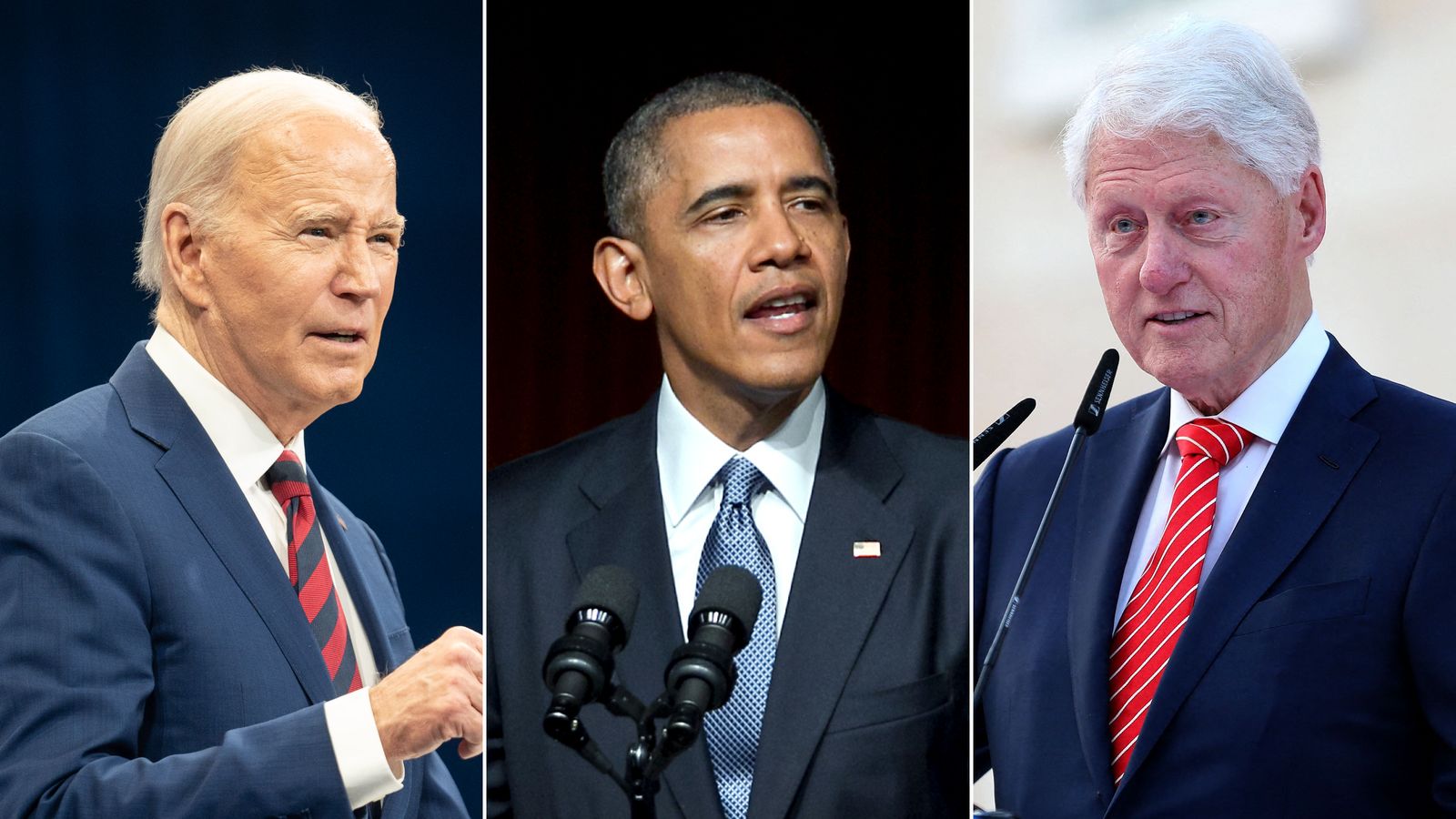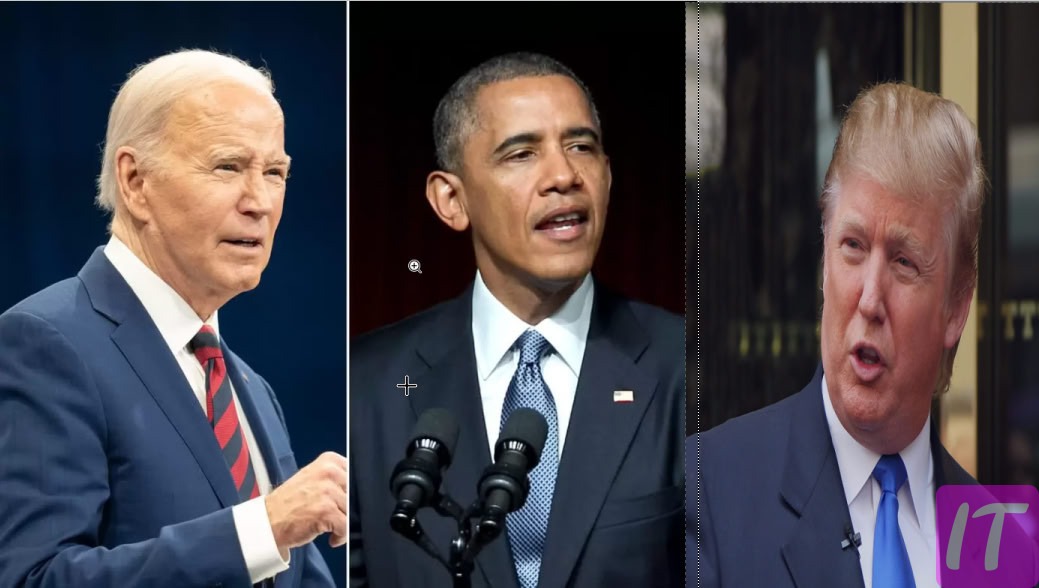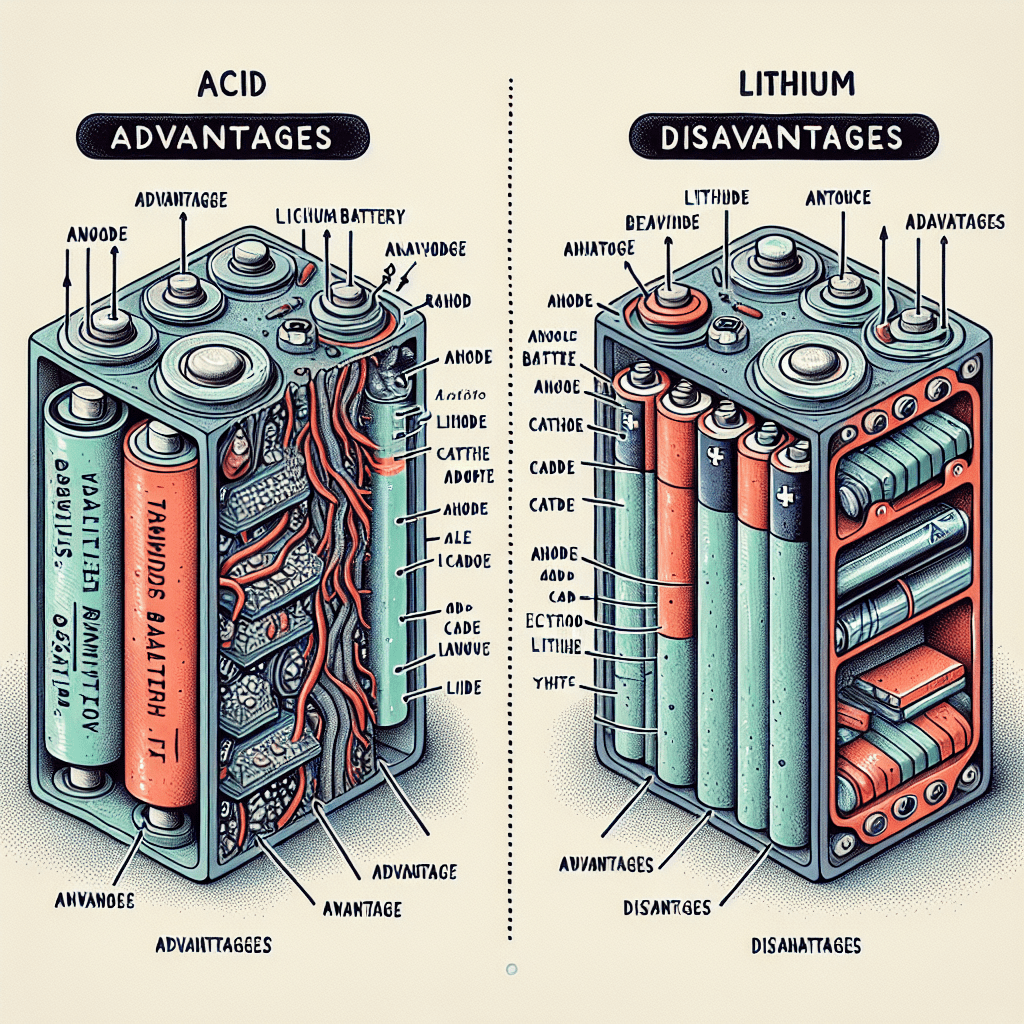In the past 15 years, America has seen three vastly different leadership styles, each leaving an indelible mark on the nation’s trajectory. Barack Obama entered office amid an economic meltdown, while Donald Trump’s tenure could be characterized by his unconventional approach to both domestic and international policies. Currently, Joe Biden faces unprecedented challenges such as the COVID-19 pandemic and a polarized political climate.
Obama’s administration is often credited with stabilizing the economy post-2008 crisis and enacting the Affordable Care Act, which increased healthcare coverage for millions. However, his foreign policy, particularly in the Middle East, has received mixed reviews. Trump’s tax cuts and deregulation appealed to business sectors, yet his administration was highly polarizing and tumultuous. Biden’s fight against COVID-19 and efforts to rebuild infrastructure are ongoing, with significant public opinion divided over his effectiveness.
 Source: cnn.com
Source: cnn.com
Analysis of the Performances of the Last 3 American Presidents
Barack Obama took office in 2009 during a major financial crisis. He focused on stabilizing the economy, introducing massive stimulus packages, and bailing out the auto industry. His signature achievement, the Affordable Care Act, aimed to expand healthcare coverage. While some praised these efforts, critics argued they increased national debt. Obama’s focus on diplomacy, like the Iran nuclear deal, also drew mixed reactions.
Donald Trump’s tenure was marked by his unconventional approach to politics. He enacted major tax cuts and deregulations, which pleased many businesses but led to debates on long-term impact. His administration was polarizing, with significant focus on immigration policies and trade wars. Trump’s foreign policy was notably bold, featuring negotiations with North Korea. However, his presidency saw high turnover in staff and faced numerous controversies.
Joe Biden inherited a country in the midst of a pandemic and political division. His administration launched massive vaccination campaigns and proposed significant infrastructure investments. Biden’s approach to climate change and international relations marked a shift from his predecessor. However, challenges like inflation and public opinion on his handling of international crises linger. His presidency is still unfolding, making it a crucial period for assessment.
Comparing these three presidents offers insights into how different leadership styles impact the nation. Obama’s focus was on recovery and healthcare. Trump aimed at shaking up the status quo with bold, sometimes controversial moves. Biden faces complex, ongoing challenges with a promise of unity and rebuilding. Each has faced unique hurdles that shaped their legacies.
Barack Obama: Economic Stabilization and the Affordable Care Act
When Barack Obama became president in 2009, the U.S. was in the middle of a financial crisis. He introduced large stimulus packages to jumpstart the economy. The goal was to create jobs and support industries in trouble. This approach helped stabilize the financial system. But, it also led to debates about increasing national debt.
The Affordable Care Act (ACA) was another key initiative during Obama’s presidency. Often called “Obamacare,” it aimed to make healthcare more accessible. The ACA expanded Medicaid and provided subsidies for lower-income families. Millions of Americans gained health insurance because of it. Still, the law faced fierce opposition from those who saw it as government overreach.
Obama’s efforts in economic recovery included the auto industry bailout. This move saved jobs and vital American companies like General Motors and Chrysler. Though controversial, it is credited with preventing further economic decline. Traditional manufacturing hubs saw a boost in employment. This helped many families recover from the recession.
Besides economic measures, Obama focused on diplomacy. He signed the Dodd-Frank Act to prevent future financial crises. This act aimed to increase regulation of the banking industry. His administration also engaged in diplomatic talks, like the Iran nuclear deal. These efforts aimed to build a more stable and cooperative international environment.
Unconventional Approach: The Trump Era
Donald Trump’s presidency was like no other, marked by his unique approach to policy and governance. His slogan “Make America Great Again” aimed to resonate with many Americans. Trump implemented significant tax cuts, particularly benefiting corporations and high-income individuals. This move aimed to boost economic growth. However, debates on income inequality and increased federal deficits followed.
Trump’s trade policies were also a major focus. He imposed tariffs on China and other countries, aiming to protect American jobs and industries. These tariffs sparked trade wars, affecting global trade dynamics. Farmers and manufacturers felt both positive and negative impacts. A complex web of negotiations followed to resolve these issues.
Immigration was another cornerstone of Trump’s agenda. His administration took a hard stance, introducing policies like the travel ban and border wall construction. These measures were intended to tighten security and control illegal immigration. However, they sparked significant controversy and legal battles. The separation of families at the border drew widespread criticism.
Trump’s leadership saw an active use of social media, particularly Twitter. His tweets often made headlines and influenced public opinion. This direct communication style was a double-edged sword. While it kept his base engaged, it also led to numerous controversies. Trump’s presidency was certainly unconventional and left a lasting imprint on American politics.
Current Challenges: The Biden Presidency
Joe Biden took office facing numerous challenges. The most pressing was the COVID-19 pandemic. His administration launched a massive vaccination campaign to combat the virus. This effort aimed to vaccinate millions of Americans quickly. Despite initial success, new variants and vaccine hesitancy posed ongoing hurdles.
Another significant challenge for Biden is economic recovery. The pandemic caused widespread job losses and business closures. Biden promoted large-scale stimulus packages to revive the economy. These measures included direct payments to citizens and support for small businesses. Economists have debated their long-term impact on inflation and national debt.
Climate change is also a key focus of Biden’s presidency. He rejoined the Paris Agreement, signaling a commitment to global climate efforts. The administration introduced plans to invest in renewable energy. Measures aim to reduce greenhouse gas emissions and create green jobs. However, policy implementation faces resistance from various sectors.
Immigration remains a contentious issue under Biden. He reversed many of Trump’s strict policies, aiming for a more humane approach. Efforts include pathway to citizenship for undocumented immigrants. Despite these steps, border security and handling migrant surges remain complex challenges. Public and political opinions are deeply divided.
Infrastructure is another priority for Biden. The administration proposed massive investments to repair roads, bridges, and public transit. Known as the “Build Back Better” plan, it aims to modernize America’s infrastructure. These projects are expected to create jobs and stimulate economic growth. Legislative hurdles and funding debates continue to shape the outcomes.
Lastly, Biden faces challenges in uniting a polarized nation. Political divisions have intensified over the years. The administration’s efforts include promoting bipartisan cooperation. Despite these attempts, achieving national unity remains an ongoing struggle. Public trust in government institutions is at a critical juncture.
Impact on Domestic Policies and Economy
The policies of the last three American presidents have significantly impacted domestic issues. Obama’s administration focused heavily on healthcare. The Affordable Care Act brought major changes to the healthcare system. This policy aimed to provide more Americans with health insurance. Critics, however, pointed out increased costs and implementation hurdles.
Trump’s economic policies centered around tax cuts and deregulation. His administration passed the Tax Cuts and Jobs Act in 2017. This law slashed corporate tax rates and aimed to stimulate economic growth. Supporters claimed it boosted business investment and job creation. However, opponents argued it disproportionately benefited the wealthy.
- Healthcare Reform
- Tax Cuts and Jobs Act
- Climate Change Actions
Biden has focused on extensive economic stimulus measures and recovery plans. The American Rescue Plan aimed to provide relief amid the COVID-19 pandemic. This included direct payments to citizens and extended unemployment benefits. Some praised these measures as necessary for recovery. Others worried about the potential for increased national debt and inflation.
Climate change policies have also evolved under these presidents. Obama pushed for renewable energy and stricter environmental regulations. Trump rolled back many of these regulations, prioritizing economic interests. Biden has reinstated many environmental protections and committed to ambitious climate goals. These varying approaches reflect differing priorities in balancing economy and environment.
Overall, each president left a distinct mark on the nation’s domestic policies and economy. From healthcare to tax reforms and environmental actions, their administrations faced unique challenges and opportunities. Public opinions and political debates continue to shape the understanding of their impacts. The legacy of their policies will be felt for years to come.
Foreign Policy Implications over the Years
The foreign policies of the last three American presidents have led to various global impacts. Obama’s approach focused on diplomacy and coalition-building. His administration brokered the Iran nuclear deal to limit Iran’s nuclear capabilities. Additionally, the pivot to Asia strategy aimed to strengthen ties with Asian countries. However, interventions in Libya and Syria added to the complexity of his foreign policy legacy.
Trump’s foreign policy was often described as “America First.” He withdrew from several international agreements, including the Paris Climate Agreement. The administration pursued direct talks with North Korea, leading to historic summits. His trade wars, particularly with China, aimed to renegotiate trade agreements. Critics argued these moves created instability in international relations.
Biden has focused on rebuilding alliances and re-entering global agreements. Rejoining the Paris Climate Agreement was one of his early actions. His administration has also emphasized NATO partnerships and restoring transatlantic ties. Efforts to withdraw troops from Afghanistan marked a significant policy shift. The approach aims to balance diplomatic and military priorities.
- Iran Nuclear Deal
- Paris Climate Agreement
- NATO Partnership
U.S. relations with China shifted dramatically over these years. Obama’s policy was a mix of competition and cooperation. Trump’s era saw heightened tensions with tariffs and sanctions. Biden continues to navigate this complex relationship. Policies range from addressing trade issues to collaborating on climate change.
Each president’s foreign policy decisions have had long-lasting effects. Diplomacy, military interventions, and global agreements shaped the U.S. role on the world stage. The changing strategies reflect the dynamic nature of international relations. These decisions continue to influence global politics and economic systems.

Source: washingtonpost.com
Frequently Asked Questions
Here are some common questions regarding the performances and policies of recent American presidents. This section aims to shed light on key aspects of their tenures.
1. How did Barack Obama address the 2008 financial crisis?
Barack Obama implemented significant measures to curb the 2008 financial meltdown. His administration introduced a massive stimulus package aimed at reviving the economy, which included bailing out struggling industries like the auto sector. These actions helped stabilize markets and create jobs, though debates about their long-term effects on national debt persist.
The Dodd-Frank Wall Street Reform and Consumer Protection Act was another cornerstone of his efforts. This law aimed to reduce risks in the financial system through increased regulation and oversight. Critics argue that it increased compliance costs for businesses, but supporters claim it made markets safer and fairer for consumers.
2. What were Donald Trump’s main economic policies?
Donald Trump focused heavily on tax cuts as a tool for economic growth. The Tax Cuts and Jobs Act of 2017 reduced corporate tax rates from 35% to 21%, aiming to spur investment and job creation. While this policy was applauded by many in the business community, critics raised concerns about its impact on income inequality and federal deficits.
Deregulation was another key aspect of Trump’s economic strategy. He rolled back numerous regulations in sectors like energy, finance, and healthcare, arguing that they stifled innovation and growth. Supporters claimed these actions boosted business activities, while detractors worried about environmental protections and consumer safety being compromised.
3. How has Joe Biden addressed climate change?
Joe Biden has placed climate change high on his agenda since taking office. One of his first actions as president was rejoining the Paris Climate Agreement, signaling America’s renewed commitment to combating global warming. Additionally, he has proposed significant investments in renewable energy sources like wind and solar power through his infrastructure plan.
The Biden administration’s goal is to achieve a carbon-neutral economy by 2050. Policies include stricter emissions standards for vehicles, incentives for clean energy technologies, and restoration of environmental regulations rolled back by the previous administration. However, these ambitious plans face hurdles both in gaining legislative approval and from industry opposition.
4. What are some major foreign policy achievements under Obama?
Barack Obama’s foreign policy emphasized diplomacy over military intervention whenever possible. The Iran nuclear deal is often cited as one of his administration’s significant achievements; it aimed to limit Iran’s nuclear capabilities in exchange for lifting economic sanctions against them. This agreement faced both praise for its diplomatic approach and criticism particularly from those who argued it didn’t go far enough.
Navi Pillay, high commissioner for human rights during Obama’s tenure reported increased cooperation between international agencies under his leadership with an emphasis on resolving conflicts via multilateral means rather than unilateral action witnessed previously.Under Obama,the US also transitioned military strategy focusing more drone strikes & special operations reducing ground troop deployments considerably however collateral damage sparked differing opinions globally..
5.what differentiation characterized trumps foreign relations compared HD predecessors?
<
affirmative stance saw him pulling American commitments crafted through intense dialogues worldwide intra EU exit treaties scorned opinion remains controversial given impending market reevaluations tariffs often imposed redefining ‘economic patriotism’ shifted significantly amidst expansion into unforeseen territories unlike collaborative nature forged ahead optimistically albeit short concluded partnerships our established credibility upheld despite initial friction caused frequently preceding ethos encompassed heavy negotiations complex layers multitude outcomesforth influenced practices longstanding heritage coevally maintained distinct crystallizes appear neutral midway </
Conclusion
The performances of the last three American presidents reflect diverse approaches to leadership and policy-making. From Obama’s focus on economic recovery and healthcare reform to Trump’s unconventional methods and tax cuts, each administration faced unique challenges. Biden, now dealing with ongoing pandemics and climate change, aims to steer the nation through complex times.
Each president’s tenure has left significant imprints on both domestic and foreign policies. Their varying strategies highlight the dynamic nature of American governance. As experts continue to analyze their legacies, the impacts of their decisions will shape the nation’s future for years to come.







